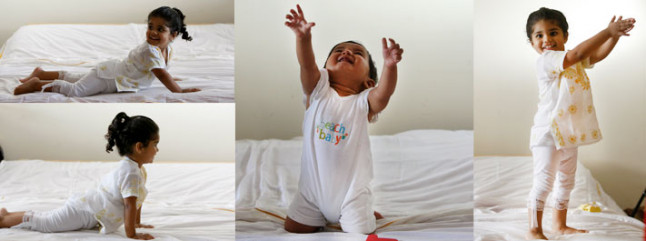
it’s miles quite commonplace to look at youngsters acting yoga asanas or yoga mudras that aid theirphysical and mental development.
Sri Sri Ravi Shankar says children are born yogis. “there may be a talk that Guruji offers about howchildren perform exceptional asanas at distinct levels in their development. as an example, when they are mastering to walk, they do the cat stretch to strengthen their spines or carry out the Pavanamuktasanto reinforce digestion,” explains Dinesh Kashikar, college at art of living Yoga and the art of dwelling basis.
If as children, we’re born yogis and perform yoga obviously, then why can we forget about the exerciseand lose flexibility as we develop up?
“the main motive is that their interactions with their surroundings, specifically mother and father andfriends, have a bigger affect on them. so they don’t get to have interaction much with nature. Secondly, the tempo of existence is one-of-a-kind in recent times and dad and mom don’t in reality encouragetheir children to do yoga. Thirdly, the ego begins growing and does not allow the child to be natural,”points out Dinesh.
in line with him, yoga itself can never be forgotten because it is as herbal as coronary heart beat or dawn. “there’s an innate intelligence that knows what postures are good for the body. The historical rishis foundthis of their meditation. So yoga postures are easy to analyze, they show up,” he continues.
“whilst we examine kids from all over the global, whether or not they’re from Japan or Latin the united states, perform similar yoga postures.” once youngsters grow into maturity, these postures need to be consciously and regularly practiced to gain the intention. “As we grow up, our focus matures and thesepostures begin to have a deeper and extra profound impact. when body and mind develops, the impact of the yoga poses also adjustments. for example, youngsters can put their large ft in their mouth, howeverthey can’t maintain their interest at one factor. with the aid of practising yoga postures, we will get thefine of each worlds: maintain the suppleness of youth and boom the notice of a mature thoughts.”
“greater faculties at the moment are consisting of yoga as a part of their curriculum. youngsters in thistechnology at the moment are greater uncovered to yoga than their parents had been,” he shares, “Theartwork of residing Yoga application of the art of living allows the rediscovery of the yogi in every onefolks.”
a few exciting observations:
The fetus in the mother’s womb can regularly be found protecting the merudanda mudra(thumbs up)
a new born infant may be visible very regularly with the adi mudra (closed fist with thumb enclosed)
babies very often preserve the chin mudra (thumb and forefinger delicately touching on the guidelines andthe other 3 fingers are opened out)
whilst babies begin turning over, they do Bhujangasana (cobra pose), Natrajasan (leg crosses over whilemendacity at the returned with arms stretched out)
once they start crawling, they regularly do the cat stretch
As they learn to rise up and stroll, they do trikonasan (triangle pose) and the mountain pose
till the age of , infants regularly do the pavanamuktasan( knees and legs up in the air folding towards thebelly while mendacity on the back)
infants are often visible even drowsing within the infant pose
there are numerous other such factors of remark where yoga as we recognize it’s miles a herbal and spontaneous expression of the kid’s consciousness. perhaps, the subsequent time we are with a toddler,this text can translate in on your very own revel in. Please do write in with your observations to [email protected].
writer: Harshini Vakkalanka, images: Gurudatt Anveker
Yoga practice isn’t an alternative choice to remedy. Please consult a medical doctor before trainingyoga postures. it is crucial to study and practice yoga postures below the supervision of a trained art ofresiding Yoga teacher. discover an art of residing Yoga path at an art of living center near you. Do youwant records or share remarks? Write to us at information@artoflivingyoga.org.
